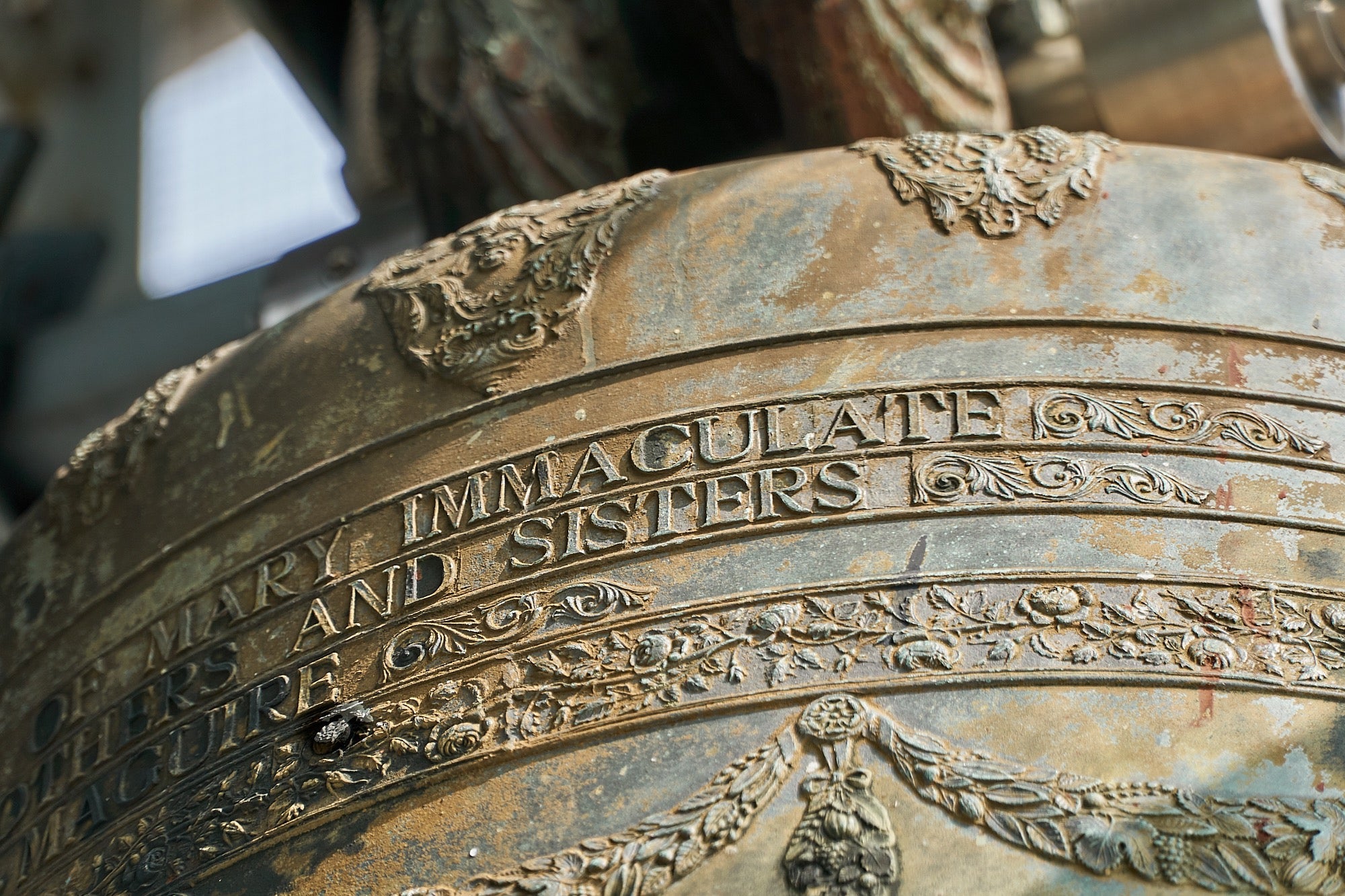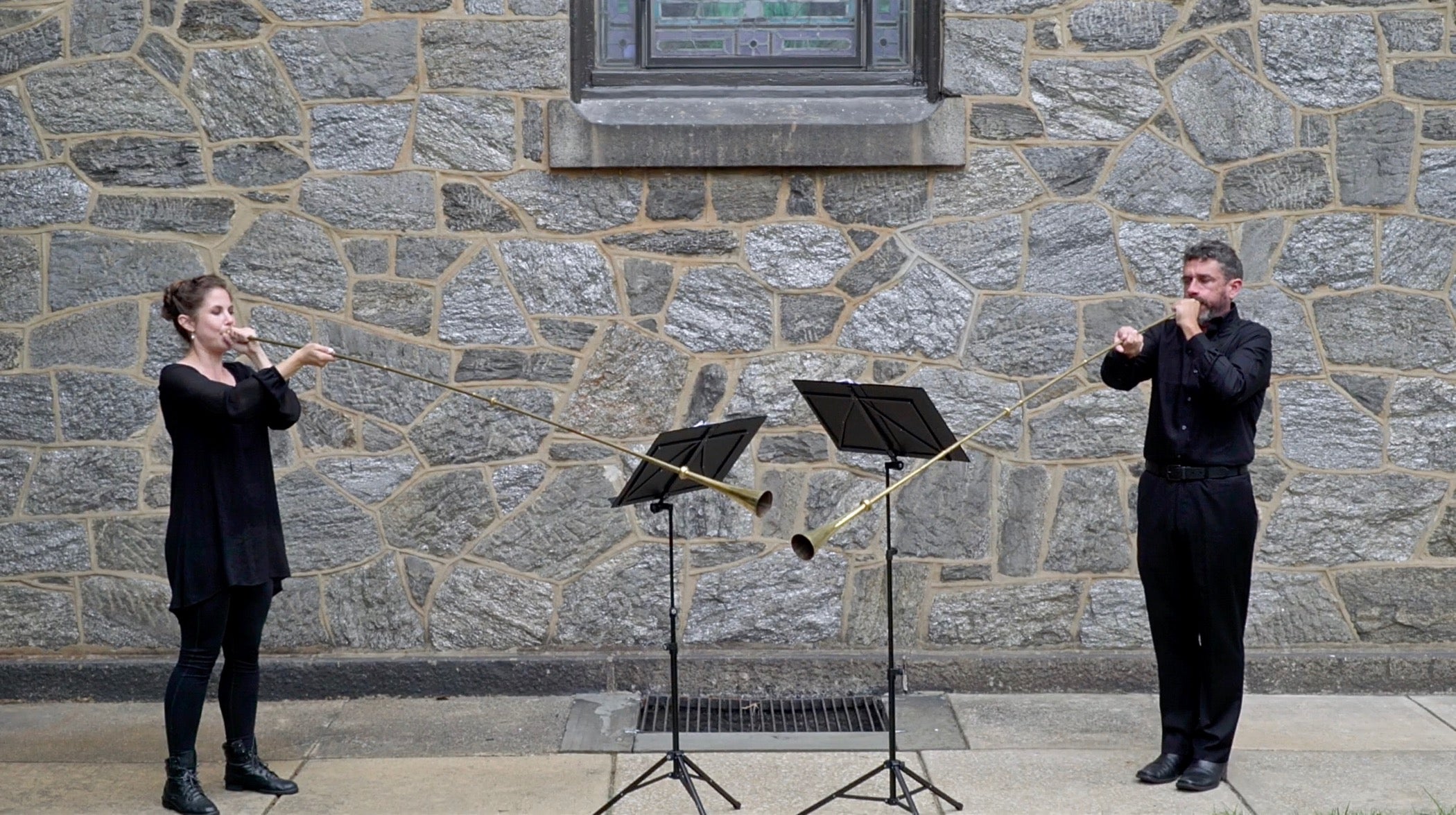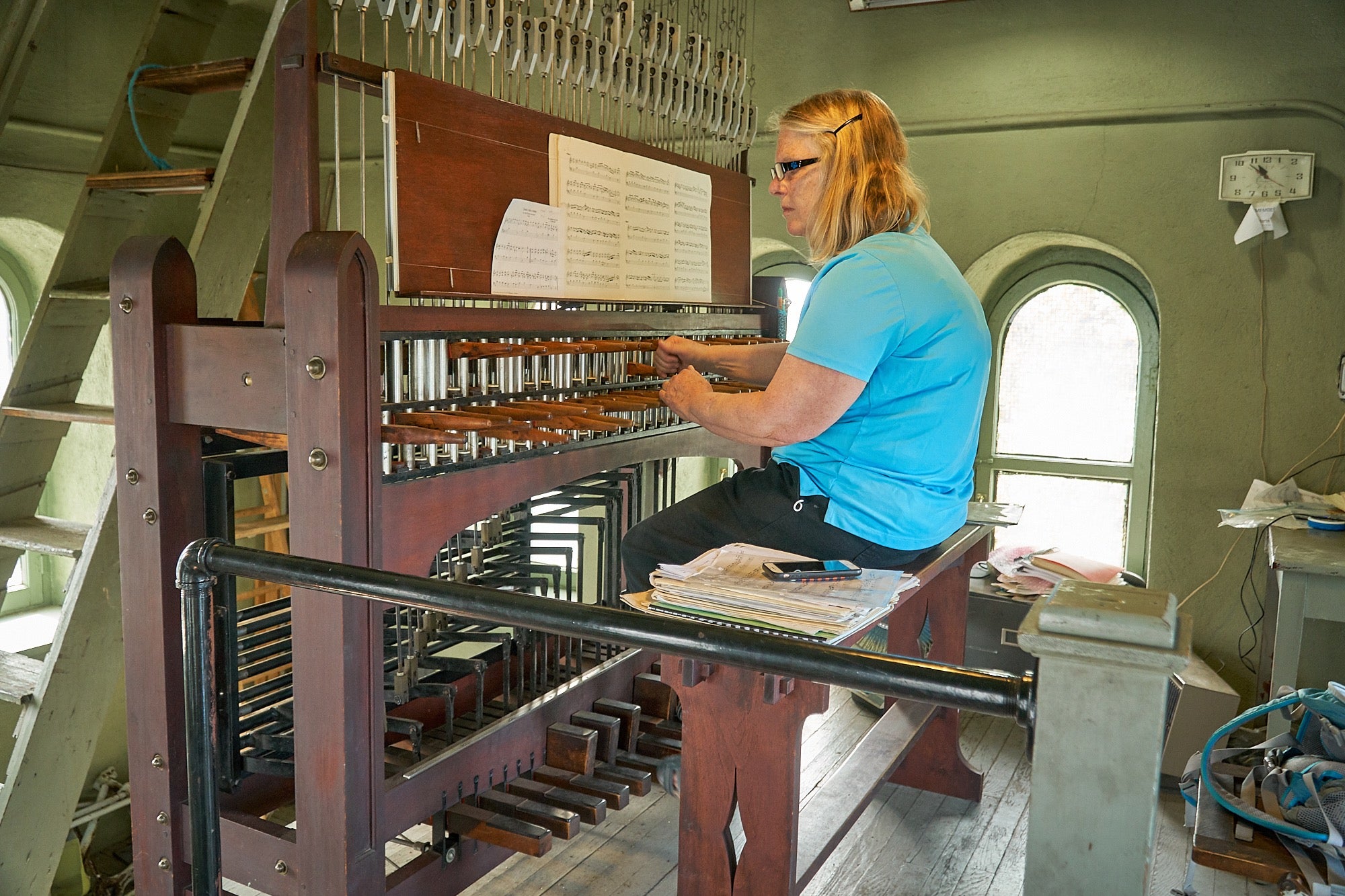A Renaissance band leans on tech for a pandemic performance
For 35 years, Piffaro the Renaissance Band has faithfully played 17th century music. This year, it had to think outside the box.
Listen 1:58
Members of Piffaro (from left) Joan Kimball, Liza Malamut, Priscilla Herreid, Grant Herreid, Erik Schmalz, and Robert Wiemken. (Sharon Torello)
This weekend, Piffaro the Renaissance Band begins its season, as many other performance organizations have, with a series of digital concerts. The ensemble of 17th century wind instruments faithfully performs music of that baroque period, but this year, the group was forced to reinvent itself.
“What can we do?” said co-artistic director Robert Wiemken, recalling the ensemble’s brainstorming session on Zoom after the COVID-19 pandemic hit. “We need to do something outdoors, to be safer for us as an ensemble to play together.”
The answer was to film a concert that would have been impossible to do with a live audience. The band reached out to a carillonneur, or a virtuoso bell-ringer playing massive church bells from a mechanical console. The band played in the courtyard of the Miraculous Medal Shrine in Philadelphia with their obscure instruments like the shawm, straight trumpets and the sackbut, trading melodies with the equally arcane carillon bells towering above them.
It is only through the magic of film editing that the concert can come together. For one, the carillon player up in the bell tower was much too far away to hear the band on the ground. Also, the Renaissance instruments are tuned to Renaissance pitch, which is about a half-step higher than modern pitches, making it difficult for them all to be in tune.

Piffaro called Janet Tebbel, the shrine’s longtime carillonneur. A film crew shot Tebbel and Piffaro separately performing variations of melodies by the 17th century Dutch composer Jacob van Eyck, and then edited them together as though they were tossing the melodies back-and-forth.
The prerecorded concert, the first of a series of four digital concerts this season, is available by streaming video from Friday until Thursday, Nov. 5. Those who buy tickets are able to access the video whenever they wish inside that time window.
Tebbel, considered a standout performer in the world of carillon, plays weekly concerts at the shrine and at the nearby First United Methodist Church of Germantown.
In the early days of the pandemic, Tebbel performed four times a week. Because of the distanced nature of the instrument, hers was some of the only in-person music to be heard anywhere.
“They can listen from their backyard. This summer we had people gathering at Wyck house across from First Methodist,” said Tebbel. “We’ve also had people listening from parked cars.”
Tebbel also live-streamed her performances on Facebook, attracting an international crowd.

For the first concert of the season, Wiemken leaned into the work of van Eyck to unite the bells and the ensemble. Van Eyck is well-known for his “Der Fluyten Lust-hof,” or “The Flutes Garden of Delight,” a two-volume collection of music for the 17th century wooden flute, known more commonly today as the recorder.
Lesser known, perhaps, was van Eyck’s groundbreaking work with carillon bells. Blind since birth, he had a pitch-perfect ear and worked with the bell manufacturers the Hemony Brothers of the Netherlands to fine-tune the overtones of their carillons.
“His contribution to the carillon world has been enormous,” said Wiemken. “But it’s not well known.”
Piffaro strives in every way to perform music of the Renaissance and later baroque era — not just the music but faithful performing techniques. There is no transcribing into modern scales, for example, or accompaniment with modern instruments.

The construction of the console and bells at the Miraculous Medal Shrine are more modern than the music Piffaro plays. Tebbel is able to tease nuance out of her bells in ways impossible in the 17th century. Although they may sound very old-world, she said they can ring with expressive tones.
But for this concert, Tebbel reigned in her techniques, playing in a way that is more faithful to the 17th century.
“I could have made it modern and quote-‘easier’ to listen to, but I wanted it to be a little more authentic,” she said.
The Piffaro band members are seen in the video playing in the stone courtyard of the Miraculous Medal. If you look sidewise slightly and dream a little, the shrine’s water fountain and high walls of Wissahickon schist might resemble a 17th century Dutch city.
“The courtyard lent itself very well to imagining we were in the courtyard of Utrecht where van Eyck was the carillonneur,” said Wiemken. “We tried to recreate the setting. It requires a little imagination, but it’s a close second.”

Get daily updates from WHYY News!
WHYY is your source for fact-based, in-depth journalism and information. As a nonprofit organization, we rely on financial support from readers like you. Please give today.



![CoronavirusPandemic_1024x512[1]](https://whyy.org/wp-content/uploads/2020/03/CoronavirusPandemic_1024x5121-300x150.jpg)


